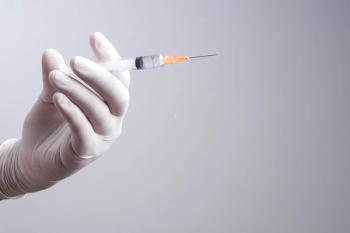
Device is minimally invasive tool for lowering IOP in open-angle glaucoma
Glaucoma surgery with a novel device (Trabectome, NeoMedix Corp.) is a minimally invasive approach that reduces IOP by about 40% with few complications. Data from a case series of 358 eyes showed that IOP dropped from a preoperative mean of about 24 mm Hg to a mean of 16 mm Hg postoperatively.
Key Points
Irvine, CA–Glaucoma surgery with a novel device (Trabectome, NeoMedix Corp.) is an effective, minimally invasive method of lowering IOP in eyes with open-angle glaucoma, according to Donald S. Minckler, MD, professor of ophthalmology and pathology, University of California, Irvine.
Approximately 500 surgeries have been performed with the device in the United States and Mexico, including about 100 cases of the surgery combined with phacoemulsification; all but a few have been on adults.
"The histologic findings that we have, including human autopsy eye material, are very supportive of the concept that the machine is doing what we think it is without significant damage to the outer wall of Schlemm's [canal] or adjacent tissues," said Dr. Minckler. "That has been clinically confirmed by the few complications that we have encountered."
Complications, he added, have been "almost trivial," except for some failures that have led to subsequent filtering surgery. "Rarely has this procedure made things worse instead of better," Dr. Minckler said. When an additional procedure is necessary, filtering surgery or shunt implantation can be performed without difficulty because surgery using the device has not affected the conjunctiva.
In a series of 358 cases, there were 25 instances in which a subsequent trabeculectomy was performed as well as five cases in which a shunt was implanted.
Other complications have included back bleeding from Schlemm's canal in about 95% of cases, which typically cleared in a few days. Pressure spikes (>21 mm Hg) were noted on the day after surgery in 63 cases.
Complications that have not been seen in the series to date include flat anterior chamber, choroidal effusion or hemorrhage, persisting corneal edema, clinically significant iris injury, hypotony maculopathy, infection, wound leak, or bleb formation.
The average drop in IOP to date has been about 40%. For a series of 358 cases, the mean preoperative IOP was 24 mm Hg ± 8; the mean at 35 months postoperatively was 16 ± 4 mm Hg. The pressure declines have been maintained out to 40 months in cases with follow-up to that point. Besides pressure stability, the standard deviation of IOP measurements narrows over the follow-up, which is a positive sign, Dr. Minckler said.
Also, in a survival analysis in which success was defined as a drop in IOP of 30% or greater or IOP < 21 mm Hg, the success rate at 35 months was about 75%.
Newsletter
Don’t miss out—get Ophthalmology Times updates on the latest clinical advancements and expert interviews, straight to your inbox.





